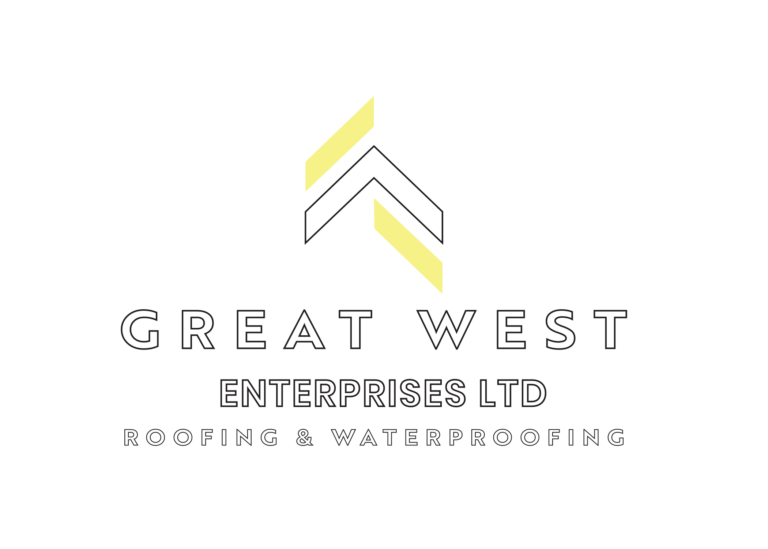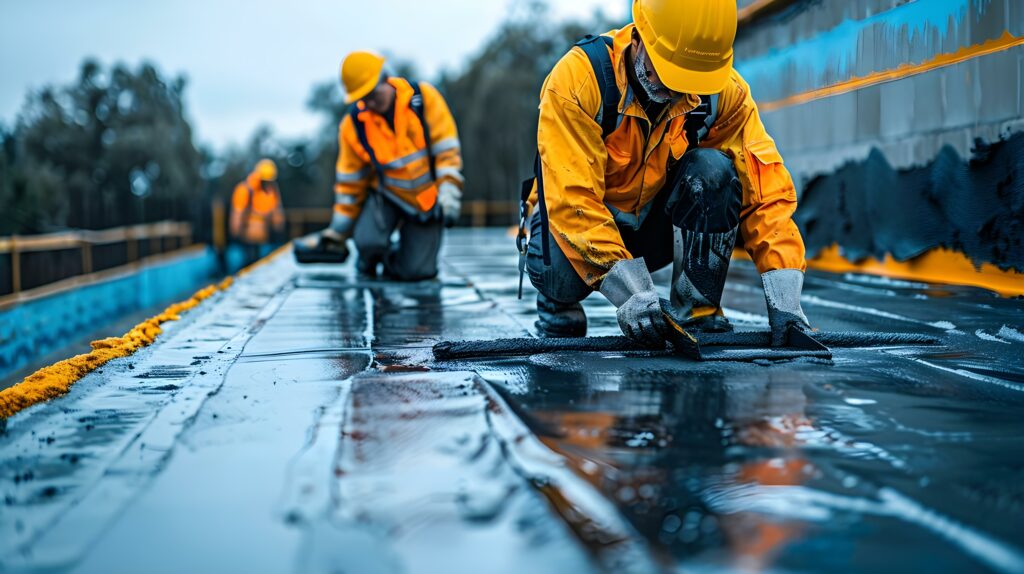Waterproofing is a critical aspect of building construction, responsible for protecting structures from the devastating effects of water infiltration. As the industry evolves, homeowners and contractors alike are seeking the most advanced waterproofing techniques to ensure the longevity and integrity of their projects. In this article, we will learn about the latest waterproofing innovations, exploring the benefits, applications, and best practices for each method.
6 latest waterproofing technique
1. Cementitious Waterproofing
Cementitious waterproofing is a popular choice for its ease of application and widespread availability. This method involves applying a cement-based coating or slurry to the surface of the foundation or structure, creating a waterproof barrier. The versatility of cementitious waterproofing makes it a go-to solution for a variety of applications, including basements, foundations, and even water treatment facilities.
Advantages of Cementitious Waterproofing
Cost-Effective: The materials used in cementitious waterproofing are relatively inexpensive, making it a budget-friendly option.
Easy Application: Cementitious waterproofing can be applied using a roller or brush, simplifying the installation process.
Proven Effectiveness: This method has a long history of successfully preventing water infiltration in various construction projects.
Applications of Cementitious Waterproofing
Foundations and Basements: Cementitious waterproofing is commonly used to protect below-grade structures from groundwater and moisture.
Bridges, Dams, and Tunnels: The cementitious method is also employed in the waterproofing of decks, bridges, dams, and tunnels, where a high level of protection is required.
Sewage and Water Treatment Plants: Cementitious waterproofing is an ideal solution for waterproofing critical infrastructure like sewage and water treatment facilities.
2. Liquid Waterproofing Membranes
Liquid waterproofing membranes offer a versatile and adaptable solution for waterproofing various surfaces. These coatings, typically made of rubber or plastic, are applied to the surface using a roller or brush, creating a seamless and flexible barrier against water infiltration.
Benefits of Liquid Waterproofing Membranes
Cost-Effectiveness: Liquid waterproofing membranes are generally more cost-effective compared to some other waterproofing methods.
High Performance: These membranes provide excellent water resistance and can accommodate structural movements.
Ease of Application: Liquid waterproofing membranes are easy to apply, making them a convenient choice for a range of projects.
Applications of Liquid Waterproofing Membranes
Foundations and Basements: Liquid membranes are commonly used to waterproof below-grade structures, such as foundations and basements.
Decks and Balconies: These flexible coatings are well-suited for waterproofing elevated structures like decks and balconies.
Roofs: Liquid waterproofing membranes can also be used to protect flat roof areas exposed to weather.
3. Bituminous Coatings
Bituminous coatings, a mixture of bitumen (a type of asphalt) and a filler material, offer a robust and long-lasting waterproofing solution. These coatings are applied to surfaces using a roller or brush, creating a waterproof barrier that is resistant to various environmental factors.
Characteristics of Bituminous Coatings
Adhesive Properties: Bituminous coatings exhibit excellent adhesive qualities, allowing them to bond securely to the surface.
Corrosion Resistance: These coatings are highly resistant to corrosion, making them suitable for a wide range of applications.
Durability: Bituminous coatings are known for their strength, waterproofing capabilities, and overall longevity.
Economic Viability: Bituminous coatings are a cost-effective waterproofing solution.
Applications of Bituminous Coatings
Roofs: Bituminous coatings are commonly used to waterproof roofs, providing a durable and weather-resistant barrier.
Foundations and Decks: These coatings can also be applied to foundations, decks, and other below-grade structures to prevent water infiltration.
Existing Surfaces: Bituminous coatings can be used to waterproof both new and existing surfaces, making them a versatile option.
4. Bituminous Membranes
Bituminous membranes, composed of bitumen and a reinforcement layer, offer a more advanced waterproofing solution compared to bituminous coatings. These membranes are applied to surfaces using heat or a solvent, creating a durable and flexible barrier against water penetration.
Features of Bituminous Membranes
Puncture and Fatigue Resistance: Bituminous membranes exhibit exceptional resistance to punctures and fatigue, ensuring long-lasting protection.
Dimensional Stability: These membranes maintain their dimensional stability under tension, providing reliable performance.
Chemical Resistance: Bituminous membranes are highly resistant to a wide range of chemicals, making them suitable for various applications.
Flexibility: The flexible nature of these membranes allows them to accommodate structural movements without compromising their waterproofing capabilities.
Applications of Bituminous Membranes
Roofing: Bituminous membranes are a popular choice for waterproofing low-sloped roofs due to their proven performance.
Foundations and Below-Grade Structures: These membranes can be used to waterproof foundations, tunnels, and other below-grade structures.
Elevated Structures: Bituminous membranes are also suitable for waterproofing elevated structures like parking decks and plaza decks.
5. Polyurethane Liquid Membranes
Polyurethane liquid membranes represent a specialized waterproofing solution, particularly suited for flat roof areas exposed to weather. These liquid-applied coatings offer enhanced flexibility and adaptability, making them a valuable option in certain waterproofing applications.
Benefits of Polyurethane Liquid Membranes
Flexibility: Polyurethane liquid membranes provide greater flexibility compared to some other waterproofing methods.
Versatility: These membranes can be used on a variety of surfaces, including balconies, terraces, roofs, and damp walls.
Seamless Application: Polyurethane liquid membranes create a seamless, continuous barrier, reducing the risk of leaks and water infiltration.
Considerations for Polyurethane Liquid Membranes
Moisture Sensitivity: Polyurethane is highly sensitive to moisture content, requiring careful evaluation of the substrate before application to prevent issues like peeling or debonding.
Cost: Polyurethane liquid membranes are generally more expensive than some other waterproofing options.
6. Rubberized Asphalt
Rubberized asphalt waterproofing is a method that combines asphalt and recycled rubber, typically from tires, to create a flexible and durable waterproof membrane. This innovative approach not only provides effective waterproofing but also promotes sustainable construction practices.
Characteristics of Rubberized Asphalt Waterproofing
Durability: The combination of asphalt and rubber results in a highly durable and flexible waterproofing membrane.
Flexibility: Rubberized asphalt waterproofing is able to accommodate movement and expansion, making it suitable for surfaces that may experience structural changes.
Environmental Benefits: The use of recycled tires in the rubberized asphalt helps to promote sustainable construction and reduce waste.
Applications of Rubberized Asphalt Waterproofing
Roofing: Rubberized asphalt waterproofing can be used to protect roofs, providing a long-lasting and weather-resistant barrier.
Foundation Waterproofing: This method is also employed in the waterproofing of foundations and other below-grade structures.
Pavement Resurfacing: Rubberized asphalt can be used to resurface pavement, offering a durable and waterproof solution.
Choosing the Right Waterproofing Method
When it comes to selecting the most suitable waterproofing method for your project, several factors must be considered. The choice will depend on the specific requirements of the structure, the level of water exposure, the desired level of flexibility, and the overall budget.
Factors to Consider When Choosing a Waterproofing Method
Water Exposure Level: Assess the degree of water exposure the structure will face, as this will determine the appropriate level of waterproofing required.
Substrate Conditions: Evaluate the condition and composition of the substrate to ensure compatibility with the chosen waterproofing solution.
Flexibility Requirements: Consider the need for flexibility, especially in areas prone to movement or expansion, and select a waterproofing method that can accommodate these factors.
Budget Constraints: Weigh the cost-effectiveness of each waterproofing option to align with your project’s budget.
By carefully evaluating these factors, you can make an informed decision and select the waterproofing method that best suits your specific needs, ensuring the long-term protection and performance of your structure.
Conclusion
It’s always recommended to consult with experienced waterproofing professionals to ensure the proper selection and installation of the most suitable waterproofing solution. These experts can provide tailored recommendations based on the unique requirements of your project, helping you navigate the complexities of waterproofing and achieve optimal results.
At Great West Ent., our team of waterproofing specialists is dedicated to delivering top-notch services and innovative solutions to meet the diverse needs of our clients. Whether you’re a homeowner, a contractor, or a developer, we have the expertise and resources to help you safeguard your structures against the detrimental effects of water infiltration. Contact us today to learn more about our comprehensive waterproofing services and how we can assist you in achieving your project goals.


